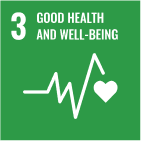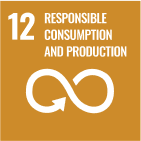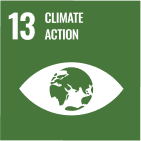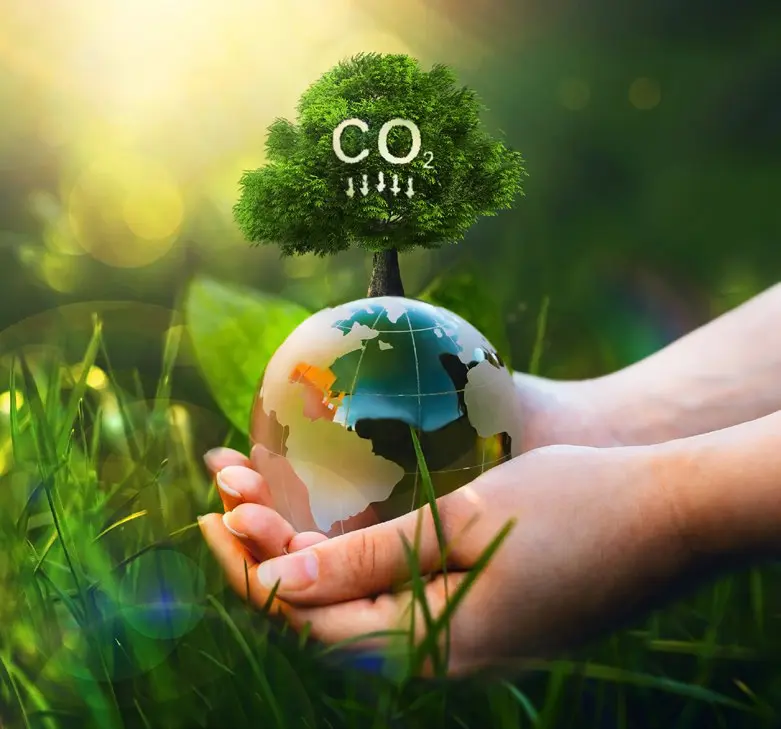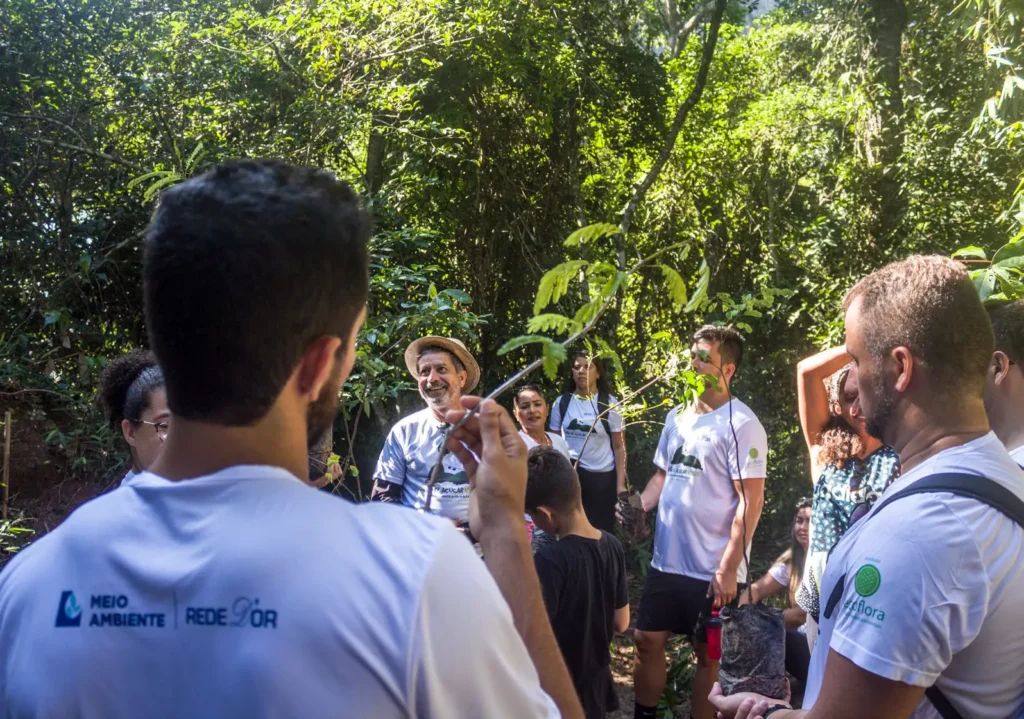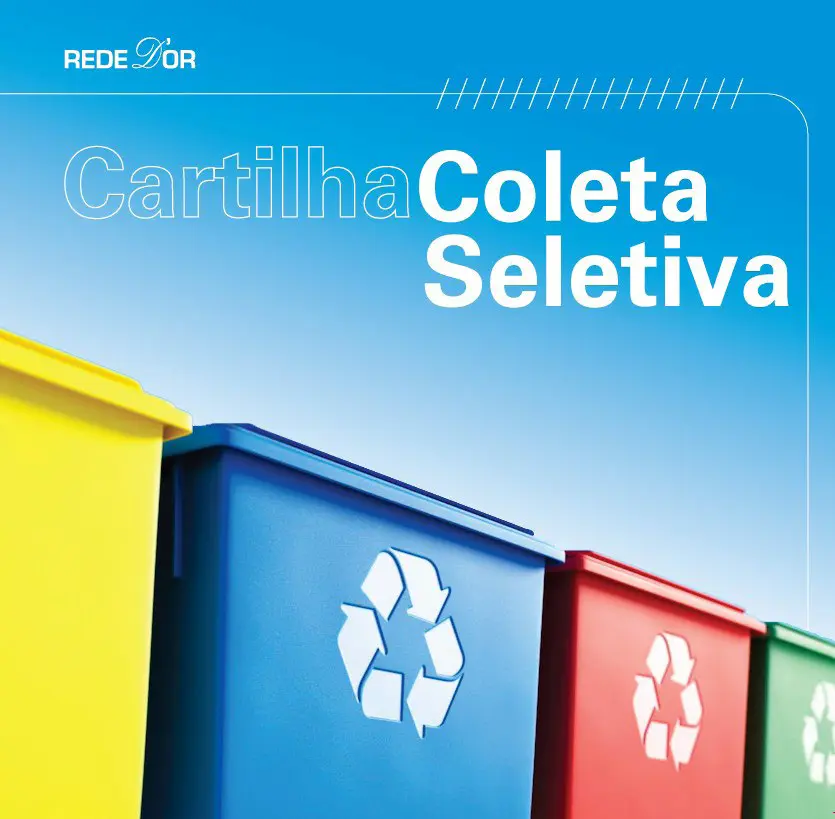sdg:
sdg:
-
3
-
12
-
13
Environmental management
Our concern for the environment is evident in the Company’s strategic drivers, in the Code of Conduct, as well as in our ESG Strategic Planning and comprises the organization’s and executives’ performance goals and targets. We have a Health, Safety, and Environment Policy that lays out guidelines on the topic and guides our actions.
We work to promote the rational use of natural resources and develop projects to reduce their consumption, thus mitigating our environmental impact. To monitor the consumption of natural resources, we rely on a tool (Schneider Electric’s Resource Advisor), which allows for real-time monitoring of water and electricity consumption in hospital units. The tool consolidates all environmental indicators onto a single platform, facilitating management and replacing internal KPI systems. In addition to the environmental data collection tool, we have an ESG management tool that incorporates key sustainability reporting methodologies.
of energy consumption from renewable sources
reduction in total hazardous waste generated
reduction in total waste generated
133
units with
GHG INVENTORY
71
units
JOINED THE FREE ENERGY MARKET
Energy
GRI 3-3, 302-1, 302-2, 302-3, 302-4, 302-5
For the operation of our lighting systems, air conditioning, heating, water pumping, elevators, and medical equipment, we primarily use power supplied by utility companies. Generators are only activated when necessary, either due to power outages from the utility company or for equipment maintenance purposes.
We monitor monthly power consumption in all hospital units in real-time (Resource Advisor), assisting in conscious consumption and power savings.
This is a strategic material topic according to our ESG Strategic Planning.
Energy consumption within the organization
GRI 302-1, 302-3, SASB HC-DY-130a.1
Renewable energy
| Energy consumption - renewable sources | GRI 302-1 |
20239 |
2022 8,9 |
20219 |
|||||
|---|---|---|---|---|---|---|---|---|
| MWh⁵ | GJ⁴ | MWh⁵ | GJ⁴ | MWh⁵ | GJ⁴ |
Comparison to previous report7 |
||
| Electricity³ | Conventional electricity (Captive Use / Utility Companies)³ | 12,641.66 | 45,509.98 (63%) | 18,672.55 | 67,221.17 (72%) | 47,846.39 | 172,247.00 (89%) | |
| Diesel (generators) | 7,517.75 | 27,063.91 (37%) | 7,183.97 | 25,862.29 (28%) | 5,652.06 | 20,347.43 (11%) | ||
| Total electricity | 20,159.41 | 72,573.89 (34%) | 25,856.52 | 93,083.46 (42%) | 53,498.45 | 192,594.43 (60%) | ||
| Heating | Diesel | 195.06 | 702.22 (0%) | - | - | - | - | |
| Gasoline | 1,447.11 | 5,209.61 (4%) | - | - | - | - | ||
| Liquefied Petroleum Gas (LPG) | 5,420.90 | 19,515.22 (14%) | 5,634.30 | 20,283.46 (16%) | - | - | ||
| Natural Gas | 32,168.27 | 115,805.76 (82%) | 30,200.77 | 108,722.77 (84%) | 35,498.08 | 127,793.10 (100%) | ||
| Total Heating | 39,231.34 | 141,232.81 (66%) | 35,835.07 | 129,006.24 (58%) | 35,498.08 | 127,793.10 (40%) | ||
|
Cooling and steam production for consumption and self-generation using unused fuels1 |
N/A | |||||||
|
Energy sale1 |
N/A | |||||||
| Total energy - non-renewable sources | 59,390.75 | 213,806.70 | 61,691.58 | 222,089.70 | 88,996.54 | 320,387.53 | ||
| Rate of non-renewable sources (GJ/pt./ day) GRI 302-3⁷ | 0.076 | 0.083 | 0.078 | Decreased | ||||
Renewable energy
| Energy consumption - renewable sources | GRI 302-1 | 2023⁹ |
2022 8,9 |
2021⁹ | |||||
|---|---|---|---|---|---|---|---|---|
| MWh⁵ | GJ⁴ | MWh⁵ | GJ⁴ | MWh⁵ | GJ⁴ | Comparison to previous report² | ||
| Electricity³ | Conventional electricity (Captive Use / Utility Companies)³ | 50,566.64 | 182,039.90 (16%) | 248,588.90 | 380,919.95 (39%) | 143,539.17 | 516,741.00 | |
| Incentivized electricity (Wholesale Energy Market) | 255,667.91 | 920,404.48 (84%) | 167,973.89 | 604,706.00 | 81,249.44 | 292,498.00 | ||
| Total electricity | 306,234.55 | 1,102,444.38 (100%) | 416,562.79 | 985,625.95 | 224,788.61 | 809,239.00 | ||
| Ethanol | 14.83 | 53.37 (100%) | N/A | N/A | N/A | N/A | ||
| Total heating | 14.83 | 53.37 | N/A | N/A | N/A | N/A | ||
| Cooling and steam production for consumption and self-generation using unused fuels¹ | N/A | |||||||
| Energy sale¹ | N/A | |||||||
| Total energy - renewable sources | 306,249.38 | 1,102,497.75 | 416,562.79 | 985,625.95 | 224,788.61 | 809,239.00 | ||
|
Rate of renewable sources (GJ/pt./day) GRI 302-3 2 |
0.060 | 0.142 | 0.216 | Decreased | ||||
Consolidated
GRI 302-1, 302-3
| Energy consumption within the organization | GRI 302-1 | 2023 | 2022 | 2021 | |||
|---|---|---|---|---|---|---|
| MWh⁵ | GJ | MWh⁵ | GJ | MWh⁵ | GJ | |
| Non-renewable sources | 59,390.75 | 213,806.70 (16%) | 61,691.58 | 222,089.70 (18%) | 88,996.54 | 320,387.53 (28%) |
| Renewable sources | 306,249.38 | 1,102,497.75 (84%) | 416,562.79 | 985,625.95 (82%) | 224,788.61 | 809,239.00 (72%) |
| Total | 365,640.13 | 1,316,304.45 | 478,254.37 | 1,207,715.65 | 313,785.15 | 1,129,626.53 |
| GJ/pt./day GRI 302-3 | 0.136 | 0.224 | 0.294 | |||
1 Not applicable (N/A). The Rede D’Or does not consume fuels for cooling processes, steam generation, and does not sell energy.
2 There was a gradual reduction in the consolidated energy intensity of hospital units when compared to previous years (approximately -39% between 2023 vs. 2022), even though absolute consumption increased, which reinforces the company’s energy efficiency actions with its goal of reducing energy consumption (see “Energy Efficiency” and “ESG Goals”) [GRI 302-4]. Considering that hospitals account for almost 95% of the company’s total consumption, it should be noted that electricity consumption in the captive market has been reducing every year as units join the Free Energy Market (FEM), which in turn means that renewable electricity consumption increases with each reporting cycle. Adherence to the FEM is a company strategy in which this action is driven by a specific goal (see the topic “ESG Goals”). With this, in line with the company’s environmental commitment, we can see that our energy consumption matrix within the organization is around 80% from renewable energy and 20% from non-renewable energy, noting that the composition of renewable energy in relation to non-renewable energy has been favored every year.
3 Captive electricity consumption (renewable and non-renewable) is estimated based on total consumption and consumption in the free energy market, in which “total electricity consumption (captive) = total electricity consumption - total electricity consumption in the free energy market”. In 2022, we reported electricity without distinguishing between renewable and non-renewable sources, and we had reported 1,052,847.12 GJ for 2022 and 981,486 GJ for 2021, as we did not have a reference for this segregation of conventional market electricity. In this reporting cycle, we adopted as a reference the Interactive National Energy Balance (BEN in Portuguese), which segregates the “Electric Flow of Internal Energy Supply” into renewable, non-renewable, and imported electricity (on the website, select “1. Energy Analysis and Aggregated Data” and “1.14. Electric Flow”). Thus, we adopted the premise of estimating our sources of electricity consumption from these theoretical data for renewable and non-renewable energy. Regarding “imported electricity,” we consider it as non-renewable, as a precaution, since the source is not traceable, it is reasonable to assume that a significant portion thereof comes from the surplus sale of Itaipu from Paraguay to Brazil (hydroelectric - renewable) [GRI 2-4]. Electricity consumption from the Free Energy Market includes hospitals and other business units, such as medical centers (CEMEDs), which can be located inside the hospital units. However, consumption in CEMEDs accounts for approximately 2% of the total, so it is insignificant in the total amount;
4 Until the publication of this report, the electric flow for 2023 had not been published. Therefore, we adopted as a reference the average electricity flow from 2020 to 2022, which will be restated in the next report after the publication of the 2023 electric flow. Thus, we considered a consumption of 80% renewable electricity and 20% non-renewable (which includes imported energy), estimating 182,039.90 GJ from renewable sources (163,972.56 GJ from hospitals) and 45,509.98 GJ from non-renewable sources (40,993.14 GJ from hospitals). In 2022, we recorded a consumption of 85% renewable energy, 12% non-renewable and 3% imports (15% total non-renewable), respectively, so we estimate a total of 380,919.95 GJ from renewable sources (376,165.73 GJ from hospitals) and 67,221.17 GJ from non-renewable sources (66,382.19 GJ from hospitals). In 2021, we recorded a consumption of 75% renewable energy, 22% non-renewable and 3% imports (25% total non-renewable), so we estimate a total of 516,741.00 GJ from renewable sources (512,489.48 GJ from hospitals) and 172,247.00 GJ from non-renewable sources (170,829.83 GJ from hospitals).
5 Energy conversion between GJ and MWh is 1 kWh = 0.001 MWh and 1 kWh = 0.0036 GJ.
6 The energy intensity within the organization has been restated from 0.82 GJ/pt.day to 0.294 GJ/pt.day for 2021; for 2022, from 0.87 GJ/pt.day to 0.224 GJ/pt.day, as duplicates were identified in the previous denominator rationale, and now considers only hospital units, as “pt.day” is a specific indicator for this type of business. [GRI 2-4].
7 As it is a metric with a denominator specific to owned hospital units, the energy intensity rate calculation considers only this business typology. In any case, the amount of energy for hospitals corresponds to practically 100% of the total value. Thus, the total estimated energy consumption within the organization in hospitals was considered as numerator at 170,829.83 GJ (non-renewable) and 512,489.48 GJ (renewable), totaling 683,319.31 GJ for 2021; and 66,382.19 GJ (non-renewable) and 376,165.73 GJ (renewable), totaling 442,547.92 GJ for 2022; and 40,993.14 GJ (non-renewable) and 163,972.56 GJ (renewable), totaling 204,965.69 GJ for 2023. We must point out that consumption in hospital units represents, on average, 95% of the total consumption reported in GRI 302-1, which is why we have chosen to report it in this way. We recognize that separate, consolidated reporting is ideal, and we will evaluate this possibility for future reporting cycles
8 The values presented in 2022 for Maternidade Star were only considered from May onwards, when the unit began its operations.
9 For M&A, consumption begins in the month of acquisition.
Energy consumption outside the organization
GRI 302-2, GRI 302-3
|
Consumption of non-renewable upstream fuel for transportation (GJ)1 |
2023 | 2022 | 2021 |
|---|---|---|---|
| GJ | GJ | GJ | |
| Diesel | 413.97 (9.7%) | 41.37 (6.7%) | N/A |
| Gasoline | 2,343.51 (54.9%) | 572.68 (93%) | N/A |
| Compressed Natural Gas (CNG) | 1,511.35 (35.4%) | N/A | N/A |
| Total | 4,268.83 | 614.05 | N/A |
| Intensity (GJ/pt./day)⁴ | 0.00025 | 0.00014 | N/A |
1 There was no energy consumption outside the organization in downstream categories.
2 The consumption of non-renewable upstream transportation fuels increased compared to the previous year. This increase is attributed to the greater accuracy of the data obtained from third-party companies regarding this indicator.
3 Data for 2021 was not reported; the Company started reporting in 2022. Data restated from 0.19 GJ/pt.day to 0.00014 GJ/pt.day, as duplicates were identified in the denominator rationale, and now considers only hospital units, as “pt.day” is a specific indicator for this type of business. [GRI 2-4]
4 As it is a metric with a denominator specific to owned hospital units, the energy intensity rate calculation considers only this business typology. In any case, the amount of energy used by hospitals corresponds to practically 100% of the total value. Thus, total energy consumption outside the organization in hospitals was considered as the numerator, at 369.89 GJ for 2022; and 1,046.67 GJ for 2023.
|
Consumption of non-renewable upstream fuel for transportation (GJ)1 |
2023 | 2022 |
|---|---|---|
| GJ | GJ | |
| Ethanol | 1,507.36 (110%) | 1.79 (100%) |
1 Energy intensity does not apply to this indicator since consumption was not from a hospital unit.
Energy intensity ratio
GRI 302-3
| Measurement unit | 2023 | 2022 | 2021 |
|---|---|---|---|
| GJ/pt./day |
GJ/pt./day1 |
GJ/pt./day1 |
|
|
Energy intensity ratio within the organization1,2 |
0.136 (approx.100%) | 0.224 (approx.100%) | 0.294 (100%) |
|
Energy intensity ratio outside the organization1,2 |
0.00025 (approx.0%) | 0.00014 (approx.0%) | N/A |
| Consolidated energy intensity ratio² | 0.136 | 0.224 | 0.294 |
1 Energy intensity within the organization was rectified from 0.82 GJ/pac.day to 0.294 GJ/pac.day for 2021; for 2022, from 0.87 GJ/pac.day to 0.224 GJ/pac.day. The intensity outside the organization was rectified in 2022, from 0.19 GJ/pac.day to 0.00014 GJ/pac.day. For both cases, duplicity was identified in the rationale of the denominator [GRI 2-4]. It is possible to note that, until then, the energy outside the organization is not representative in comparison to that within the organization;
2 As it is a metric whose denominator is specific to its own hospital units, the intensity calculation only considers this type of business. In any case, the amount of energy used by hospitals corresponds to practically 100% of the total value. See more details in explanatory note 2 of GRI 302-1 and explanatory note 4 of GRI 302-2.
Free Energy Market
GRI 3-3
In 2023, we achieved the milestone of 90% of our energy consumption coming from renewable sources through the Free Energy Market (MLE, in Portuguese). This goal is part of the Rede D’Or’s ESG Strategic Planning, which will guide our actions until 2030. The initiative to migrate electricity consumption from the captive market to the free market began in 2019 with the São Lucas (SE) and UDI (MA) hospitals, and continued in 2020 and 2021 with the Perinatal Barra and Laranjeiras (RJ), Santa Cruz (PR), Aliança (BA), São Carlos (CE), Balbino (RJ), Biocor (MG), Nossa Senhora das Neves (PB), and Novo Atibaia (SP) hospitals.
In 2023, we continued the migration plan for another 27 consuming units, totaling 13 MW average of contracted incentivized energy (wind, solar, biomass, and small hydroelectric plants). We currently have 71 consuming units in the Free Energy Market (located in 66 hospitals and medical centers), equivalent to 35 MWaverage, and we aim to reach 74 units by 2025.
The units consuming incentivized energy will be recognized with the International Renewable Energy Certificate (I-RECs), internationally applied to track environmental attributes and prove that the electricity consumed by the company comes from 100% clean sources.
Data on energy consumption from the Free Energy Market can be found in “GRI 302-1 - renewable energy consumption”. We have an MLE-related target in the “Energy” material topic, which can be seen in the “ESG Goals” chapter.
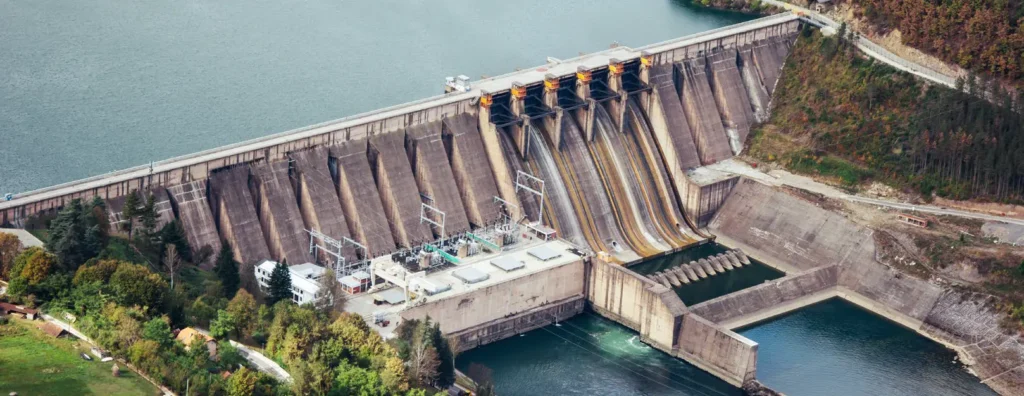
Energy Efficiency
GRI 3-3, 302-3, 302-4, 302-5
We promote conscious and efficient energy consumption through the Energy Efficiency Program, which includes actions in electricity, water, and combustible gas. Among the noteworthy projects within the program is the Energy Efficiency Project in Chilled Water Plants (CAGs in Portuguese), whose main focus is to ensure the efficiency of this system by optimizing infrastructure, operation, and monitoring, also relying on artificial intelligence algorithms and machine learning to achieve the best equipment performance and reduce energy consumption.
We currently have 23 Energy Efficiency projects in operation in CAGs, with 20 ongoing contracts, five under deployment and three in the contracting stage,—in addition to another 32 identified as potential projects to be applied. Each of these projects undergoes a rigorous economic, financial, and technical feasibility analysis by the Company’s corporate engineering and maintenance team before being effectively implemented.
In 2023, the 15 projects in operation in the CAGs recorded a reduction in electricity consumption of 16.9% (5,257.40 MWh) compared to the same period in the previous year. This result can be seen in the target for the “Energy” material topic in the “ESG Goals” topic. This reduction is equivalent to 394.3 tons of CO2 avoided and represents net savings of BRL 1,625,172.07 [GRI 3-3, 302-4].
Hospital São Luiz Itaim (SP), for example, implemented a robust energy efficiency program in 2023. An expert, supported by a remote team of engineers and a complex automation system, runs a program aimed at improving the performance and energy efficiency of the chillers. Fine adjustments are constantly made to all equipment parameters considering conditions, allowing them to operate with greater efficiency and lower energy consumption. This, coupled with efficient facades, reduces monthly energy costs, maintains the hydrotechnical comfort of the building, provides safety for patients, ensures adequate lighting during clinical and surgical procedures, and for general use of the building by patients and technical staff.
Reduction in energy consumption
16.9%
in CAGS in 2023
Net savings
BRL 1.6
MILLION
Efficiency in combustible gas
The optimization of the heat recovery system aims to reduce natural gas consumption by utilizing the heat rejected by the chiller, which is usually directed outside the building, to preheat water stored in thermal storage tanks for later use by the unit. This system is operational at the São Caetano unit in São Paulo, with the possibility of activation in other Rede D’Or units that have the system, which are under analysis.
For other units that do not have the heat recovery function, the use of the heat pump is under consideration, a technology that can meet a significant portion of the fuel gas consumption of the units and is currently undergoing pilot testing and further studies at the Criança unit in São Paulo.
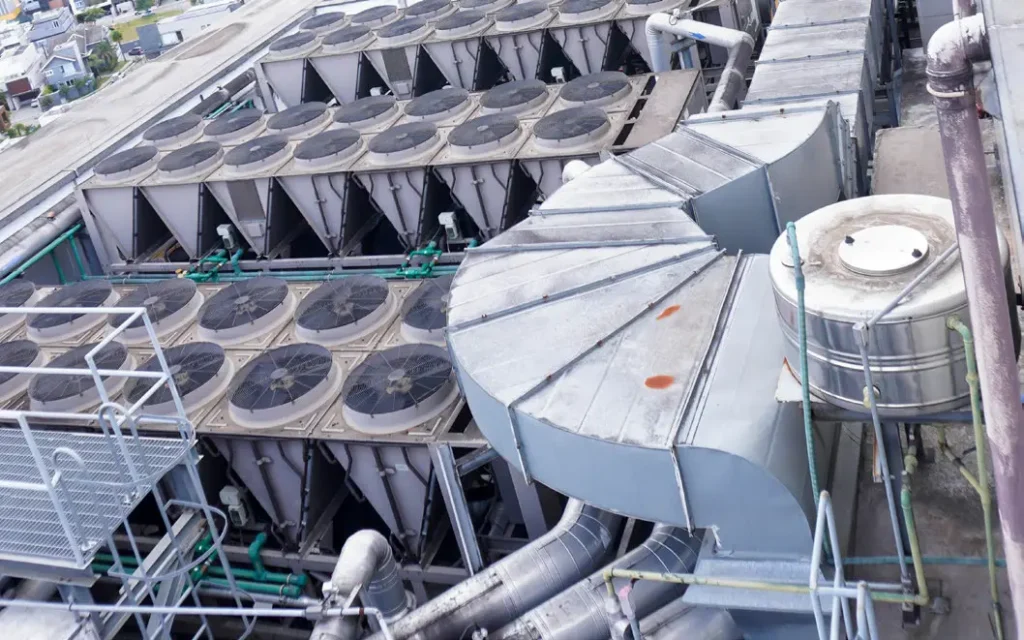
Water and effluents
GRI 2-25, 3-3, 303-1, 303-2

The Company’s water and effluent management is governed by two internal regulations available to all Rede D’Or’s business units, referencing various federal and state legal regulations, such as the Ministry of Health’s Ordinance 888/2021 and National Environmental Council (Conama, in Portuguese) Resolution 430/2011, ensuring that management of said resources comply with the standards set by proper authorities [GRI 303-2].
Crucial to our operations, water used in our healthcare units is withdrawn through three possible means: from a utility company, wells, and/or water trucks. Regular quality analyses are conducted for all three sources by an independent laboratory to assess their physicochemical and microbiological potability parameters—color, turbidity, conductivity, pH, total dissolved solids, ammonia, alkalinity, hardness, total coliforms, Escherichia coli, etc [GRI 303-4]. Sampling defines the analysis collection points, conducted by the Maintenance department and the Hospital Infection Control Committee of the unit, so that each point can strategically represent the entire area, with special attention to areas designated as critical. This ensures the quality of the water supplied to our units [GRI 3-3, 303-2].
Within hospital activities, we have two potential local impact agents on water bodies: clinical analysis laboratories and pathological anatomy laboratories. This is due to the use of chemical reagents and other substances commonly used to increase contrast and optimize bacterial analysis, such as dyes, if they come into contact with water bodies. To prevent these potential impacts, thus preserving the local ecosystem and the occupational safety of employees, all inputs used in these activities have safety data sheets (SDS) containing instructions on the correct disposal of these materials. The equipment used in these places is connected to properly sealed and identified containers, ensuring no leakage into the sewage system, and later sent for treatment and final disposal by companies complying with all environmental and legal requirements [GRI 3-3].
After use, water undergoes treatment at Sewage Treatment Plants, in the case of units located where the water and sewage utility company does not have effluent collection systems, in order to meet all parameters outlined in National Environment Council’s (Conama, in Portuguese) Resolution 430/2011, based on the classification of the water body into which the effluent will be subsequently discharged, in addition to local laws [GRI 303-2].
We conduct regular environmental audits at all hospital units to map and identify environmental aspects and potential impacts, establishing action plans for deviations and non-compliances. External audits are conducted on critical service suppliers, such as suppliers involved in waste management through collection, transportation, treatment, and/or final disposal, as well as laundries. Audits on these suppliers are conducted in two stages, involving the collection of relevant documentation for potential legal compliance assessment and on-site visits to inspect the structure and operational procedures [GRI 2-25, 3-3].
We do not have a specific methodology for evaluating water abstraction in water-stressed areas, as the Company is studying the possibility of starting research on the subject [GRI 303-3].
Water withdrawal, consumption, and discharge
GRI 303-3, GR 303-4, GRI 303-5
| Water withdrawal, consumption and discharge by source¹ | 2023 | 2022 |
20215,6 |
||||||
|---|---|---|---|---|---|---|---|---|---|
| m³ | ML | m³ | ML | m³ | ML | Comparison to previous report⁷ | |||
|
Water withdrawal GRI 303-3 2,3,4 |
Third-party water (freshwater) | Concessionary | 1,930,989.46 (60%) | 1,930.99 | 1,750,698 (77%) | 1,750.70 | 1,676,447 (73%) | 1,676.45 | |
| Water tanker | 989,489 (31%) | 989.49 | 314,089 (14%) | 314.09 | 209,838 (9%) | 209.84 | |||
| Groundwater (freshwater) | Artesian well | 308,660 (9%) | 308.66 | 214,316 (9%) | 214.32 | 409,956 (18%) | 409.96 | ||
| Total water withdrawal | 3,229,138 | 3,229.14 | 2,279,102 | 2,279.10 | 2,296,240 | 2,296.24 | |||
| Total water discharge GRI 303-4² | Third-party water (freshwater) | Utility Company | 1,544.791 | 1,544.79 | 1,400,558 | 1,400.56 | 1,341,157 | 1,341.16 | |
| Water tanker | 791,591 | 791.59 | 251,271 | 251.27 | 167,870 | 167.87 | |||
| Groundwater (freshwater) | Artesian well | 246,928 | 246.93 | 171,453 | 171.45 | 327,964 | 327.96 | ||
| Total water discharge | 2,583,310.21 | 2,583.31 | 1,823,282 | 1,823.28 | 1,836,992 | 1,836.99 | |||
| Total water consumption GRI 303-5 ³ | 645,828 | 645.83 | 455,820 | 455.82 | 459,248 | 459.25 | |||
| Consumption rate (m3/pt./day)⁸ | 0.237 | 0.165 | 0.192 | Increased | |||||
1 Report adjusted according to GRI 303-3, 303-4, and 303-5 standards, while keeping previously reported data unchanged. For benchmarking purposes, peer comparison, and performance evaluation, we also report rate per patient/day (GRI 2-4). It is not yet possible to measure water withdrawal and discharge in water-stressed areas, if any. It is also not possible to differentiate between categories of freshwater (total dissolved solids 1,000 mg/L) and/or other types of water (total dissolved solids > 1,000 mg/L).
2 Since it is not possible to accurately measure water discharge, we adopt the technical estimation reference, the “return coefficient (c)” defined by ABNT NBR 9649:1986, which sets out “C = 0.8”, where C represents the “average ratio between volumes of sewage produced and water actually consumed.” Therefore, we consider that 80% of withdrawn water has been converted into disposed sewage. In other words, “water discharge = 0.8 x water withdrawal;”
3 It is not possible to measure water consumption, so we follow the rationale provided by GRI 303-5, where “water consumption = total water withdrawal – total water discharge.” This is the first time we report in this manner (GRI 2-4).
4 For reporting to ANAHP, we define water consumption as water withdrawal to align our reporting with the indicators of this organization, which are the data published in the “Observatório Anual”(Annual Observatory).
5 2021 data does not include information on Hospital Guaianases from January to June.
6 The 2021 data for Hospital São Lucas RJ only includes the month of August.
7 Regarding performance, there was an increase in water collection due to an expansion in the number of beds and units, which led to an increase in consumption intensity when compared to the previous year. This year, for these indicators, the hospital units (with the exception of the Badim, Cinco de Outubro and Yutaka Takeda units), oncology units, Richet units, two IDOR units and three corporate units are being considered.
8 Since it is a metric whose denominator is specific to own hospital units, the intensity calculation only considers this type of business. In any case, the amount of water collected by hospitals corresponds, on average, to 98% of the volume. Therefore, the total water consumption in hospitals was considered as the numerator at 454,145.18m³ for 2021; 439,686.52m³ for 2022; and 642,852.10m³ for 2023.
9 There was no change in water storage in 2023.
Water Efficiency Project
GRI 3-3, 303-2, 303-3, 303-4, 303-5
Water is a strategic material topic according to our ESG Strategic Plan. The Water Efficiency Project seeks to reduce costs related to water supply and consumption, through operations optimization and remote monitoring. Using newer, more efficient equipment brings the benefit of these savings, alongside periodic tests of cisterns, pipelines, leak detection, and even adjustments to existing equipment and process guidance (where possible), all of which has a substantial impact on consumption. Launched in 2021 at four hospital units, the program was already implemented in 15 units by the end of 2023, with new participating units expected for the next reporting cycle.
The program also features the TDRR remote monitoring system, with artificial intelligence and identification of each unit’s profile, enabling real-time monitoring of water consumption by analyzing building behavior and anticipating potential consumption increases, thus optimizing project performance. The methodology evaluates reservoir consumption levels, consumption by time (nightly, daily, monthly), ongoing leak detection, operational safety, monitors pump activations and failure, consumption reduction, and offers an alarm system via app, text message, email, and WhatsApp.
Units complement the program with their own initiatives, including the installation of delay tank systems, rainwater harvesting for reuse, installing automatic faucets, and reusing water from air conditioning units.
The introduction of dry bath technology for bedridden patients across 64 hospital units was one of the initiatives that helped reduce water consumption, as it uses 200 mL of water per bath kit, compared to 1 to 2 liters used in traditional baths.
Additionally, we encourage the reduction of water consumption in our employees’ and associates’ homes through campaigns on responsible usage in our units. On World Water Day, for example, Hospital São Luiz São Caetano provided informative posters with important tips for reducing water consumption in households.
In 2023, we added nine units, bringing the total number of participating units in the project to 15. As a result, a 17% reduction in water consumption was recorded in 2023, equivalent to 111,334.84 m³. This translated to net savings of BRL3,910,935.73. This percentage is part of the target monitored under the “Water and Effluent” material topic, as presented in the “ESG Goals” chapter. We anticipate the inclusion of at least 6 more units in the next reporting cycle.
Although consumption rates increased [GRI 303] between 2023 and 2022, the effect of the Water Efficiency Project is key to preventing an even marked increase.
Redution in
17%
water consumption in the units participating in the project
net savings
BRL 3.9
million
Climate Change
GRI 3-3, 201-2, 305-1, 305-2, 305-3, 305-4, 305-5, 305-6, 305-7, SASB HC-DY-450a.1
Climate change caused by increased Greenhouse Gas (GHG) emissions represents one of the greatest global challenges we face today. It impacts the environment, food security, human health, the economy, and social justice. Mitigating GHG emissions and adopting adaptive measures are crucial to reducing the impacts of climate change and promoting a sustainable, resilient future.
Our Policy on Climate Change, which was approved by the Board of Directors, lays down the Company’s main guidelines and commitments to manage climate change risks and its impact on our units and businesses, providing impact identification, mitigation, and adaptation mechanisms. We also seek to raise awareness among our employees and suppliers about the importance of the matter, while serving as catalysts for the transition towards a low-carbon economy.
Climate change matters are addressed by the Executive Board and committees, with ongoing analysis of related indicators.
Waste management
GRI 3-3, 306-1, 306-2
Our operations produce both hazardous (biological, sharps, and chemical) and non-hazardous (organic and inorganic) waste, which are correctly disposed of according to their nature. For non-hazardous waste, only those that are not technically or economically feasible to undergo recycling or other disposal methods are sent to landfills. Hazardous waste, on the other hand, is sent to specialized companies, with chemicals being sent for incineration and biological waste and sharps for autoclaving.
Disposable inputs are segregated at the source by the hygiene teams of the units, weighed, and packaged according to the guidelines of RDC 222/2018, issued by the National Health Surveillance Agency (Anvisa, in Portuguese), and collected and treated by third-party companies, according to applicable treatments, as mentioned. These companies undergo a homologation process, where technical and legal documents are evaluated, and their facilities and processes are audited before they are hired. To ensure ongoing compliance with all regulations, suppliers undergo regular spot audits following their contracting [GRI 2-25].
The waste generation profile of each unit is monitored through the Schneider Electric’s Resource Advisor system, which collects data on weighing, disposal, management costs, and waste traceability documents.
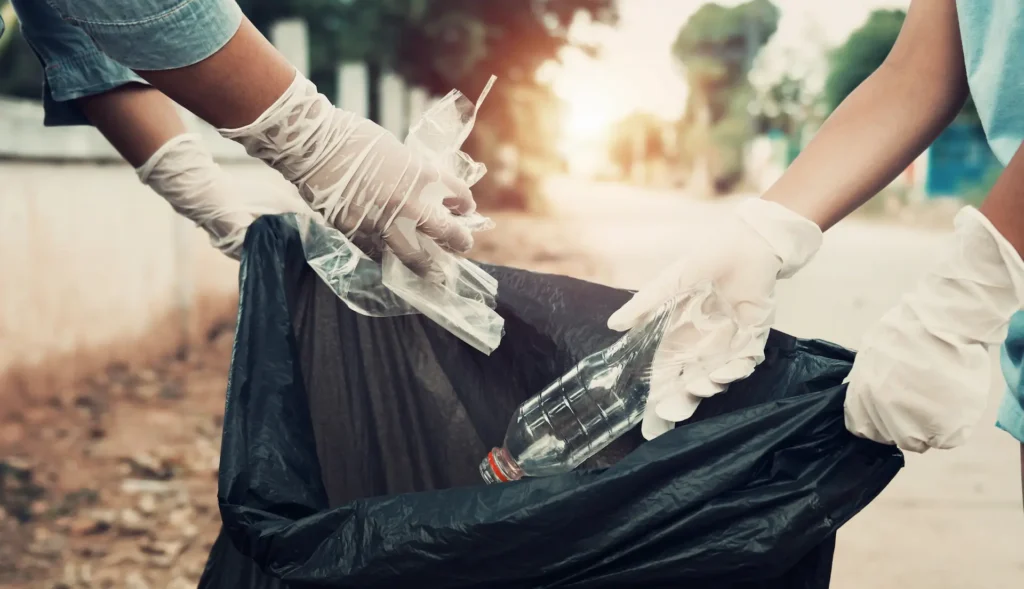
Waste generated by composition of waste (t) | GRI 306-3, SASB HC-DY-150a.1
| Classification | Composition |
20237, 10 |
20226 |
20215 |
|---|---|---|---|---|
|
Group A1 |
RSS - Infectious | 8,268.02 (21.9%) | 8,985.32 (22.7%) | 11,944.01 (29.5%) |
|
Group B1 |
RSS – Chemicals | 523.16 (1.4%) | 962.87 (2.4%) | 1,126.78 (2.8%) |
|
Group D1 |
RSS – common waste (organic) | 24,832.71 (65.8%) | 25,610.25 (64.8%) | 23,891.69 (59.1%) |
|
Group E1 |
RSS – Sharps | 527.36 (1.4%) | 759.15 (1.9%) | 768.36 (1.9%) |
| Hazardous recyclables |
Lamps4 |
6.45 (~0.0%) | 3.77(~0.0%) | 2.80 (~0.0%) |
| Batteries | 4.38 (~0.0%) | 2.68 (~0.0%) | 2.75 (~0.0%) | |
|
Electronic equipment8 |
100.29 (0.3%) | 85.96 (0.2%) | 134.77 (0.3%) | |
| Non-hazardous recyclables | Paper, metal, plastic, glass, and others | 2,984.44 (7.9%) | 2,637.63 (6.7%) | 2,215.26 (5.5%) |
| Organic | 478.08 (1.3%) | 467.33 (1.2%) | 337.12 (0.8%) | |
| Total waste generated (t) | 37,724.87 | 39,514.96 | 40,423.54 | |
|
Waste generation rate (t/pt./day)9 |
0.0138 | 0.0143 | 0.0160 | |
|
Comparison to previous report² |
Decrease | |||
Waste diverted from disposal | GRI 306-4, SASB HC-DY-150a.1
| Classification | Composition |
Recovery (outside the organization)³ |
20237, 10 |
20226 |
20215 |
|---|---|---|---|---|---|
| Hazardous waste |
Lamps4 |
Recycling | 6.45 (0.2%) | 3.77 (0.1%) | 2.80 (0.1%) |
| Batteries | 4.38 (0.1%) | 2.68 (0.1%) | 2.75 (0.%) | ||
|
Electronic equipment8 |
100.29 (2.8%) | 85.96 (2.7%) | 134.77 (5.0%) | ||
| Non-hazardous waste | Food waste | Composting | 478.08 (13.4%) | 467.33 (14.6%) | 337.12 (12.5%) |
| Paper, metal, plastic, glass, and others | Recycling | 2,984.44 (83.5%) | 2,637.63 (82.5%) | 2,215.26 (82.3%) | |
| Total waste diverted from disposal (t) | 3,573.64 | 3,197.37 | 2,692.70 | ||
|
Intensity of waste diverted from disposal (t/pt.) 9 |
0.0013 | 0.0012 | 0.0011 | ||
|
Comparison to previous report² |
Increased |
||||
Waste directed to disposal (t) | GRI 306-5, SASB HC-DY-150a.1
| Classification | Composition | Final disposal method (outside the organization)³ |
20237, 10 |
20226 |
20215 |
|---|---|---|---|---|---|
| Hazardous waste |
RSS – Infectious4 |
Other disposal operations (autoclaving) | 6,245.42 (18.3%) | 5,571.15 (15.3%) | 11,944.01 (31.7%) |
| Incineration (without energy recovery) | 2,022.60 (5.9%) | 3,414.17 (9.4%) | |||
| RSS - Chemicals | Incineration (without energy recovery) | 523.16 (1.5%) | 962.87 (2.7%) | 1,126.78 (3.0%) | |
|
RSS - Sharps4 |
Other disposal operations (autoclaving) | 350.94 (1.0%) | 347.88 (1.0%) | 768.36 (2.0%) | |
| Incineration (without energy recovery) | 176.42 (0.5%) | 411.27 (1.1%) | |||
| Non-hazardous waste | RSS - Common waste (organic) | Landfill containment | 24,832.71 (72.7%) | 25,610.25 (70.5%) | 23,891.69 (63.3%) |
| Total waste directed to disposal (t) | 34,151.25 | 36,317.59 | 37,730.84 | ||
|
Waste directed to final disposal (t/pt.)9 |
0.012 | 0.013 | 0.015 | ||
|
Comparison to previous report² |
Decreased | ||||
1 Healthcare Waste (RSS, in Portuguese) classification into groups A, B, C, D, and E, according to ANVISA’s Collegiate Board Resolution (RDC) No. 222/2018. Group C (radioactive) is not counted.
2 Total waste generated by the Company decreased by about 3.6% (consolidated intensity). This can be attributed to the structuring of the Waste Management Program and its waste reduction subprogram, as well as the intensification of provided training.
3 With regard to “waste diverted from disposal” [GRI 306-4], there is no waste classified as “preparation for reuse” or “other recovery operations”. The other disposal methods include “waste directed to disposal” [GRI 306-5] and the Company does not have waste classified as “incineration (with energy recovery)”, while waste from “other disposal operations” is autoclaved. Waste reported in [GRI 306-4] and [GRI-306-5] is sent outside the organization, so there is no waste classified as “within the organization”. The sum of indicators GRI 306-4 and GRI 306-5 (consolidated) includes GRI 306-3 (consolidated waste generated). We have adjusted the reporting of these indicators in relation to the previous reporting cycle due to a more assertive interpretation of what is requested in their protocol [GRI 2-4].
4 The lamp indicator includes both fluorescent and LED lamps. . As of 2022, it was possible to account for infectious waste and sharps with the final disposal methods separated into “incineration (without energy recovery) and “other disposal operations (autoclaving)”, as reported in GRI 306-5.
5 2021 data includes Hospital São Lucas (RJ) information for August and September, only.
6 The values presented in 2022 for Maternidade Star were only considered from May onwards, when the unit began its operations.
7 The values presented in 2023 for the São Luiz Campinas unit were only considered from March onwards, when the unit began its operations.
8 In the previous reporting cycle, electronic devices was reported as ‘non-hazardous,’ while this year they are classified as ‘hazardous.’ Furthermore, there was a restatement in the volume for 2021 from 133.68 t to 134.77 t, and for 2022 from 92.41t to 85.96t. This change is negligible as it was less than 10% for each year, and given the proportion of this waste in relation to others [GRI 2-4].
9 As this is a metric whose denominator is specific to hospital-owned units, the intensity calculation only considers this type of business. In any case, the amount of waste generated by hospitals corresponds to practically 100% of the volume. Thus, the numerator considered the total waste generated (hazardous and non-hazardous) in hospitals was 13,067.98t (hazardous) and 24,767.56 t (non-hazardous), totaling 37,835.55 t for 2021; and 10,181.52t (hazardous) and 27,834.01t (non-hazardous), totaling 38,015.53t for 2022; and 9,295.31t (hazardous) and 28,160.865t (non-hazardous), totaling 37,456.18t for 2023.We recognize that the ideal is to have separate reporting by business type, and consolidated, and we will evaluate this possibility for the next cycles.
10 This year, these indicators include the hospital units (with the exception of the Badim, Cinco de Outubro and Yutaka Takeda units), the oncology units, the Richet units, two IDOR units and three corporate units.
Corporate Waste Management Program
GRI 3-3, 306-3, 306-4, 306-5
Waste is also a strategic material topic in our ESG Strategic Planning. Each of our hospital units has its Healthcare Waste Management Plan (PGRSS, in Portuguese), approved by the relevant regulatory body. The initiative is overseen by the corporate Sustainability and Environment team, which is also responsible for the annual environmental audits, conducted internally to ensure the proper execution of all internal norms and procedures, as well as municipal, state, and federal regulations, and externally to ensure the proper provision of waste collection, transportation, treatment, disposal, and final disposal services. In 2023, investments in waste management amounted to BRL 31.9 million.
Internal audits follow an Environmental Risk Matrix, established to determine risk levels for each unit, considering many material criteria. Throughout 2023, 93 internal environmental audits and 23 external audits were conducted. In internal audits, 1,714 events were identified, and 733 actions were implemented. We recorded a 43% effectiveness rate in reducing recurring non-conformities [GRI 2-25].
We have implemented a waste management program consisting of three main subprograms structured around this topic, following the waste disposal hierarchy outlined in the National Solid Waste Policy (PNRS, in Portuguese, Federal Law 12305/2010):Waste Reduction; Reverse Logistics, Reuse, and Recycling; Use of Recycled Materials.
MilION
invested in waste management
In 2023, we had a
reduction in
the total quantity of hazardous waste generated
Reduction in
total
waste generated
